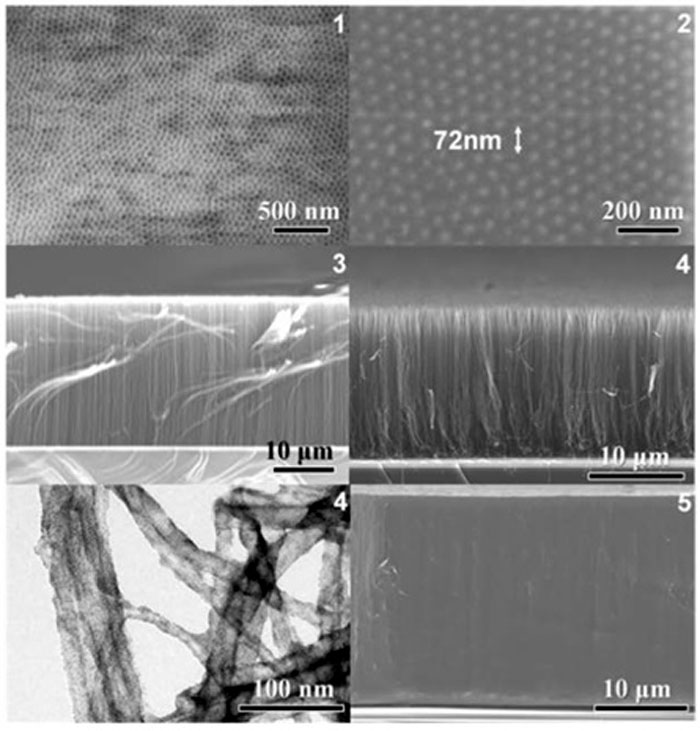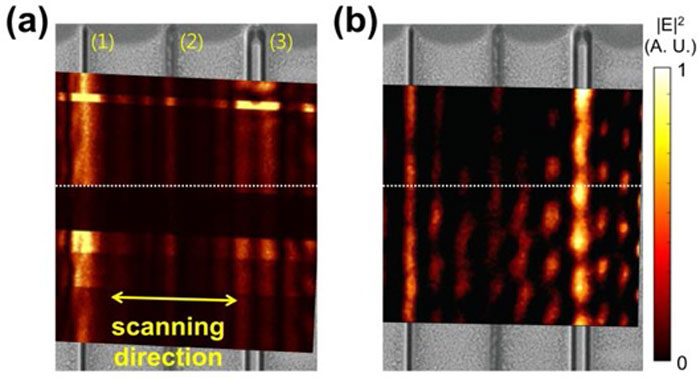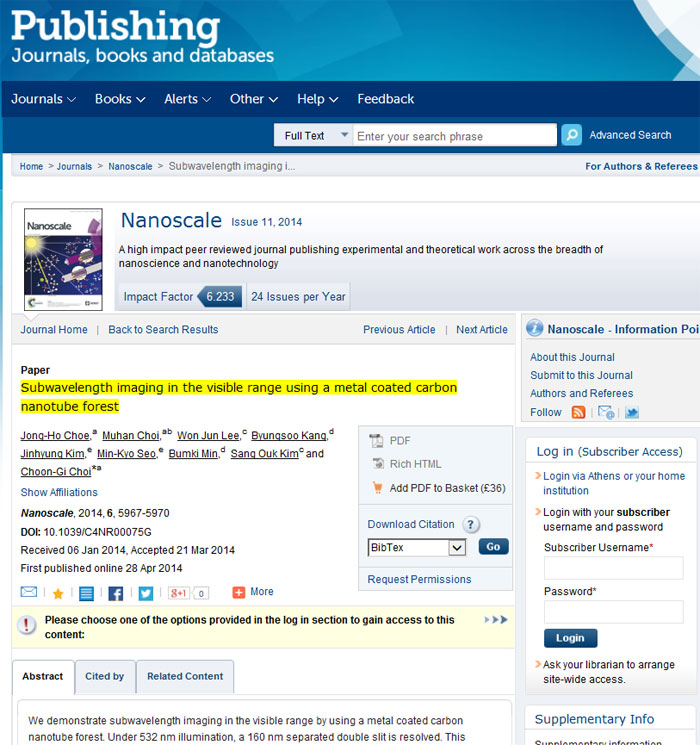
Professor Choi Choon-Gi of the Electronics and Telecommunications Research Institute (ETRI) (photo courtesy of the Ministry of Science, ICT & Future Planning)
It was developed by a research team led by Professor Choi Choon-Gi of the Electronics and Telecommunications Research Institute (ETRI).
By using a platinum-coated carbon nano tube forest, the researchers were able to demonstrate subwavelength imaging and make it visible by the human eye.
They developed the so-called "new nano lens" by overcoming the limitations of diffraction, common with optical microscopes, which prohibits users from seeing very small objects. Through the development of the new lens technology, researchers can observe three-dimensional molecular systems in real time.

Electron microscope images show evenly lined up pictures of carbon nano tubes. The cross sections of the carbon nano tubes transmit photic signals to the cross sections on the opposite side. (image courtesy of the Ministry of Science, ICT & Future Planning)

Image A shows the photic signals emitted from the new lens. Image B shows the strength of light that is recorded on a film as thin as the new lens. This test successfully proves that the new lens emits a photic signal. (image courtesy of the Ministry of Science, ICT & Future Planning)
Nanoscale, an international journal published by the U.K.-based Royal Society of Chemistry, introduced the team's research results in its April 28th edition.

A captured image of the April 28 edition of Nanoscale, an international journal published by the U.K.-based Royal Society of Chemistry.
These results have now brought humanity one step closer to the dream of a "nano microscope" that would allow people to see molecular systems with the naked eye.
Professor Choi said, “Through the technology of this new lens, which can see items merely 160 nanometers across, we have secured an opportunity to build in the near future a new technology that can see three-dimensional molecular systems.“
By Yoon Sojung
Korea.net Staff Writer
arete@korea.kr
Most popular
- Korea.net welcomes 2025 K-influencers, Honorary Reporters
- 2025 Honorary Reporter class pledges to spread 'real Korea' worldwide
- US urged to exempt tariffs on Korea in first '2+2' trade talks
- 'Gangnam Style,' 'Baby Shark' make YouTube's 2005-25 best list
- Korean culture festival in Cuba marks 1st year of bilateral ties
